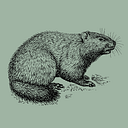The Science Behind the Impact of Deer in the Hudson Valley
While having an abundance of wildlife is a good thing, having an overpopulation of a certain species is not. This is the current situation with whitetail deer, as the overpopulation is damaging the balance of life and nature in the Hudson Valley.
One of the biggest impacts that deer have on the Hudson Valley is how they impact plant life. Since there is such an abnormally high number of deer, understory plant life is essentially nonexistent because it is their main food source. It’s incredibly hard for these small plants to grow back, as a full recovery of the understory plant life would take around 80 years. Obviously, with a consistently high deer population, that 80-year time frame is much longer.
Carey Institute biogeochemist Lynn Christensen heavily studies these issues, as she is constantly researching the interaction between animals, soil, and plants.
“I think many people think that forests should look like parks,” said Christensen. “If you go to a forest that doesn’t have a lot of large herbivores, they don’t look like the forests around here.”
Another major issue that arises from deer overpopulation is car crashes. In 2017, the National Insurance of Crime Bureau did a survey on deer-related car crash claims. 11 Hudson Valley towns ranked within the top 50, including Poughkeepsie and Rhinebeck. In total, there were 824 deer-related accidents that were reported in those 11 towns and areas.
So, finding ways to mitigate the deer population is not just important to wildlife, but to human life as well. The issue is that there are many reasons there is such a high population of deer in the Hudson Valley, ranging from the lack of predators to urbanization. Brendan Quirion, biologist and member of the Department of Environmental Conversation in New York, spoke about the issues of overpopulation.
“Elevated deer populations in the Hudson Valley have resulted from a variety of factors including historic extirpations of apex predators including wolves and mountain lions and changes in land use that have promoted habitat and food resources that are favorable to deer,” said Quirion. “Urbanization has reduced the amount of land area accessible to hunting and provided refuge for deer to evade hunting, and changes in societal norms and values have decreased interest and participation in hunting.”
There are many ways to attempt to mitigate the overpopulation of deer, with some being more effective or ethical than others. One option is birth control; however, studies have shown that birth controls alters the nature of deer, making it an inhuman practice. Scientists like Quirion and Christensen have also contemplated reintroducing natural predators, such as wolves and mountain lions. These also doesn’t seem as plausible either, as these predators would likely disrupt human life in the area.
Quirion believes the best, most effective way to mitigate is to increase hunting, and not just the hunting of bucks. Quirion believes there needs to be an increase in the hunting of does rather than hunters killing deer for their antlers.
“Although there is still a large contingent of hunters who are only interested in hunting and harvesting bucks, this trend may be changing,” said Quirion. “Recent surveys of individuals who expressed interest in participating in hunting indicate that most see procuring their own food for their family as their primary motivation to take up hunting.”
The rising trend of hunting for food would allow venison to be a more common item in people’s everyday diets. Also, hunting with the intention of collecting meat could also benefit food pantries and organizations that feed the needy and homeless.
Mitigating the overpopulation of deer can also limit Lyme’s disease, which runs rampant throughout the Hudson Valley.
“Reducing deer populations to very low levels can reduce tick densities and infection rates because deer are the primary food source for adult female ticks,” said Quirion.
While deer aren’t the only carriers of ticks, the commonality of the disease would certainly decrease with the population of deer.
Finding ways to mitigate the overpopulation of deer is crucial to the environment, and it’s a problem that scientists like Quirion and Christensen will work towards solving.
